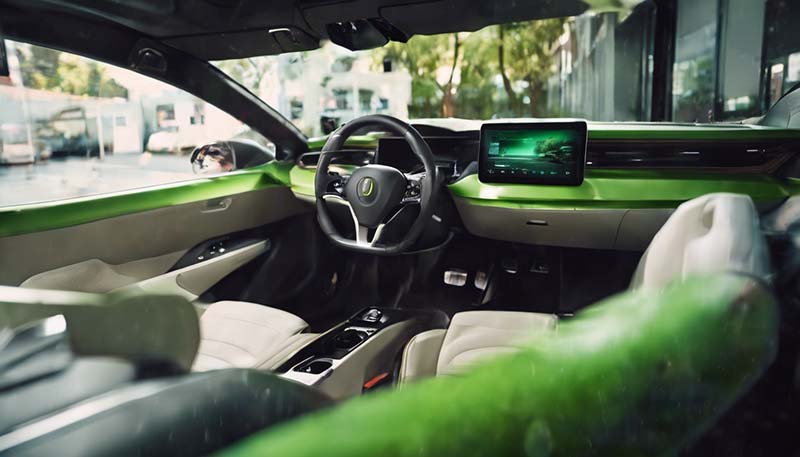Introduction
As the automotive industry shifts towards electric vehicles (EVs), designers and engineers are reimagining the car interior. With the absence of a traditional combustion engine, electric cars offer a unique opportunity to create spacious and comfortable interiors that were previously unattainable. This article will explore the innovative designs and features that are transforming the "green room" of new electric cars, making them not just environmentally friendly but also luxurious and accommodating for drivers and passengers alike.
The Rise of Electric Vehicles
The push for cleaner energy and reduced carbon emissions has accelerated the development of electric vehicles. As battery technology improves and charging infrastructure expands, EVs are becoming more accessible and practical for everyday use. This has led to a surge in demand for electric cars, prompting manufacturers to focus on creating vehicles that not only meet environmental standards but also offer a superior driving experience.
Advertisement
Designing Spacious Interiors
The removal of the internal combustion engine and transmission components allows for a more flexible and spacious interior design. Electric cars can now boast of:
- Increased Legroom: Without the need for a large engine compartment, designers can allocate more space for passengers, especially in the rear seats.
- Creative Storage Solutions: The space previously occupied by fuel tanks and exhaust systems can be repurposed into storage compartments and cargo areas.
- Open Floor Plans: Some electric vehicles are adopting an open floor plan concept, eliminating the center console and creating a more social and connected space within the cabin.
Luxury and Comfort Features
In addition to the increased space, electric cars are also incorporating luxury and comfort features that enhance the driving and riding experience:
- High-Quality Materials: The use of premium materials such as leather, wood, and aluminum in the interior design adds to the overall luxury feel.
- Advanced Technology: State-of-the-art infotainment systems, digital displays, and connectivity options are becoming standard in many electric vehicles.
- Climate Control: Advanced climate control systems ensure a comfortable temperature for all passengers, regardless of the outside weather conditions.
- Sound Insulation: Electric cars are inherently quieter than their combustion counterparts, and manufacturers are taking advantage of this by adding extra sound insulation to create a serene driving environment.
Sustainability in Interior Design
Sustainability is not just about the powertrain; it extends to the materials used in the interior as well. Many electric car manufacturers are now using:
- Recycled Materials: Fabrics and plastics made from recycled materials are being used to reduce the environmental impact of production.
- Vegan Leather: To cater to ethical consumers, some manufacturers are offering interiors with vegan leather or other animal-free materials.
- Bio-Based Materials:新材料,如由天然纤维制成的复合材料,正在被探索以减少石油基产品的使用。
Examples of Spacious Electric Vehicles
Several electric vehicles on the market today showcase the potential of spacious and luxurious interiors:
- Tesla Model S: Known for its minimalist design and ample legroom, the Model S sets a high bar for EV interiors.
- Lucid Air: With its impressive legroom and attention to detail in materials, the Lucid Air is a strong contender in the luxury EV market.
- Rivian R1T: This electric truck offers a spacious cabin with innovative storage solutions, showcasing the versatility of EV design.
Future Trends and Developments
As the electric vehicle market continues to grow, we can expect to see even more innovation in interior design. Some potential future trends include:

- Customizable Interiors: Modular seating and storage options that allow owners to tailor their car's interior to their specific needs.
- Augmented Reality Integration: The use of augmented reality to enhance the driving experience through interactive displays and information overlays.
- Smart Materials: The development of materials that can change their properties based on conditions, such as self-heating or cooling seats.
Conclusion
The interior of electric vehicles is evolving to offer more than just a sustainable driving option. With increased space, luxury features, and a focus on sustainability, the "green room" is becoming a desirable place to be. As technology continues to advance, the future of electric car interiors looks bright, promising even more comfort, convenience, and innovation for drivers and passengers.
* This article is for informational purposes only and does not endorse any specific electric vehicle or manufacturer.
Comment Box